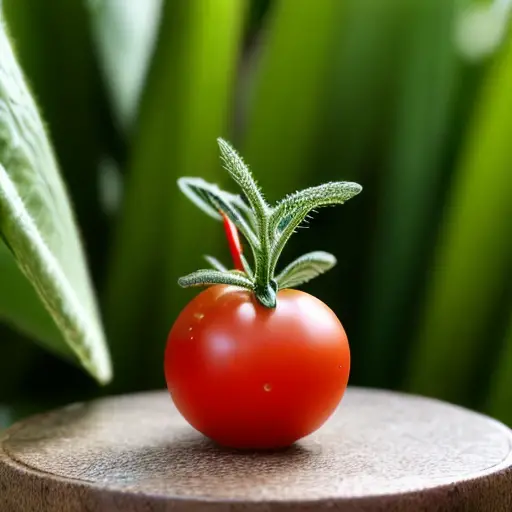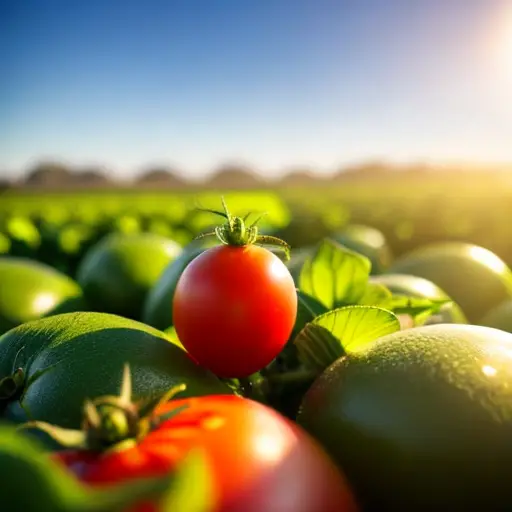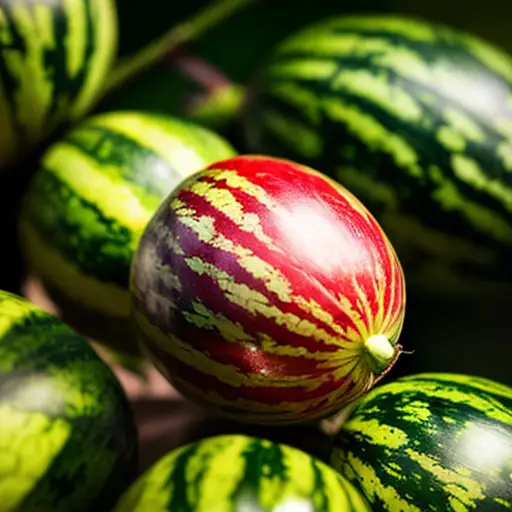The Watering Needs of Tomato Plants
Understanding Tomato Plant’s Watering Needs: Factors to Consider
Understanding Tomato Plant’s Watering Needs: Factors to Consider
Ah, the fascinating world of tomato plants and their mysterious watering needs! Just like humans, tomatoes can be a little finicky when it comes to hydration. You might be tempted to ask, ‘How much water do tomato plants actually need? Are they secretly living in an underwater kingdom?’ Well, my dear friends, the answer lies in a delicate balance of factors. First, consider the weather – if Mother Nature decides to go all-out with the rain, your tomatoes may not need as much of your precious watering efforts. On the other hand, if you live in a desert, well, let’s just say you’ll be building an intimate relationship with your watering can. Next, think about your tomato variety – those big, juicy beefsteak tomatoes might require a little extra H2O to quench their thirst, while the cherry tomatoes will be just fine with a dramatic swig. Last but not least, allow your tomatoes to voice their opinions by closely observing their foliage. Are they drooping like a sad party balloon? Time for some hydration intervention, my friend! Ultimately, understanding the watering needs of tomato plants requires patience, observation, and perhaps a few friendly conversations with your leafy companions. Remember, a well-watered tomato plant not only yields delightful fruits but also becomes a coveted summer guest – everyone loves the person who brings a basket full of homegrown tomatoes to a barbecue! So, dear gardeners, fill your watering cans, heed the signs, and embark on this delightful journey of keeping your tomato plants hydrated and happy. May you and your tomatoes thrive together, united by the power of water and the promise of deliciousness!
The Importance of Adequate Watering for Tomato Plants: A Vital Resource
Tomato plants have an amazing capacity to adapt and adjust their water requirements based on their current growth stage. As they mature, the plants actually become more efficient in utilizing water, meaning that they need less water compared to when they were younger. This ability to self-regulate their water intake helps tomato plants to thrive in a variety of environments and makes them a popular choice for home gardens and commercial farming.
Ah, the eternal question that plagues gardeners around the world: ‘How much water do tomato plants need?’ Well, my fellow plant enthusiasts, let me tell you, this is a topic that requires some serious attention. Picture this: you’re standing in your garden, gazing at your luscious tomato plants, their leaves green and vibrant. But wait, what’s that? Some shriveled, sad-looking tomatoes hanging on for dear life. Oh no, we can’t have that! So, let me emphasize the importance of adequate watering because, let’s face it, we don’t want our precious tomatoes turning into little raisins. Just remember, tomato plants need water like I need coffee in the morning – daily and in proper amounts. So, grab that watering can and give those juicy red delights the hydration they deserve! Trust me, they’ll be forever grateful.
Effective Watering Techniques for Optimal Tomato Plant Growth: Dos and Don’ts

Alright, fellow garden enthusiasts, gather around for some juicy tomato plant tips! We all know growing tomatoes can be a tricky business, but fear not, for I am here to enlighten you about the dos and don’ts of watering those red, ripe gems. Now, picture this: you’ve meticulously planted your precious tomato seedlings, eagerly awaiting the day you can sink your teeth into a fresh, homegrown tomato sandwich. But wait, how much water do these little green wonders need? Well, my friends, the key to successful tomato plant growth lies in striking the delicate balance between hydration and drowning!
First things first, let’s dive into the dos. Tomato plants prefer a good, consistent watering routine. Get yourself a watering can, a hose, or even a fancy garden sprinkler system if you’re feeling adventurous (or just want to tickle your plants). Make it a habit to water your tomato plants at their base, aiming for the soil rather than the leaves. Trust me, tomato plants have yet to master the art of umbrellas, so let’s keep the water where they need it most. Watering in the morning is ideal, allowing ample time for the soil to dry out during the day and preventing any dreaded fungal diseases from settling in.
Now, for the don’ts! Don’t be tempted to drench your tomatoes every time you pass them by. They may be growing fruit, but they’re not obsessed with liquid refreshments. Overwatering can lead to a flaccid, weak tomato plant, much like a participant in a soggy marathon. Tomato roots need oxygen too, so drowning them in standing water will only lead to a lifeguard-worthy disaster. Instead, use the tried-and-true finger test. Stick your finger about an inch into the soil surrounding your plants. If it feels dry, it’s time to quench their thirst; if it’s still a bit damp, hold off on watering for a day or two and give them a chance to work up a sweat.
Now, some tomato-loving folks may try to lure you into the world of watering gadgets, such as self-watering containers or those fancy-schmancy drip irrigation systems. While it’s true that these contraptions can be convenient and save us precious time, let’s not forget the excitement of getting our hands a little dirty. There’s nothing like the sensation of a well-aimed watering can, the thrill of watching your tomato plant’s leaves glisten with droplets of life. So, my friends, remember to embrace the humble act of hand-watering and connect with your plants on a more personal level. After all, who needs a fancy system when we’ve got our own hands and a sense of humor to guide us through the ups and downs of tomato plant parenting?
In conclusion, tomato plants need a careful balance of hydration without drowning. Keep them consistently watered, targeting the soil rather than the leaves, and time your watering sessions for the morning. Remember, these plants aren’t professional divers, so don’t subject them to endless pools of water. Use the trusty finger test to determine when it’s time to water, and don’t be swayed by watering gadgets if you enjoy getting your hands dirty. So let’s take a leaf out of our tomato plants’ book and find that perfect equilibrium between wet and dry. Your tastebuds will thank you when you bite into that tangy, sun-kissed tomato, grown with love and a pinch of humor. Happy watering, my fellow tomato enthusiasts!
Over-Watering vs. Under-Watering: Finding the Right Balance for Healthy Tomato Plants
A fun fact about how much water tomato plants need is that they have a love for hydration! On average, a tomato plant can consume up to 5 gallons (19 liters) of water per week, depending on the weather, which is roughly equivalent to providing them a refreshing water slide adventure! So, make sure to keep those tomato plants well-quenched to keep them happy and juicy.
Ah, tomato plants, the delicate divas of the vegetable garden. They demand just the right amount of attention, like needy celebrities on a red carpet. But when it comes to their hydration, it’s a delicate dance between over-watering and under-watering. You see, over-watering these little green monsters is like giving them a VIP pass to a never-ending pool party. Sure, they’ll be thrilled at first, but watch out for those waterlogged roots throwing a tantrum. On the other hand, under-watering tomatoes is like withholding backstage passes from Taylor Swift, resulting in withered leaves and sad, sorry-looking fruit. So, what’s the secret? Finding the right balance is key – it’s like coaxing a picky toddler to eat their greens. Give them a good soak when the soil feels dry, but not so much that they’re swimming in a tomato soup. A happy medium, just like that elusive ‘balanced life’ we’re all searching for, is what we’re aiming for here. Now, if only someone could figure out a way to water plants with a margarita…






